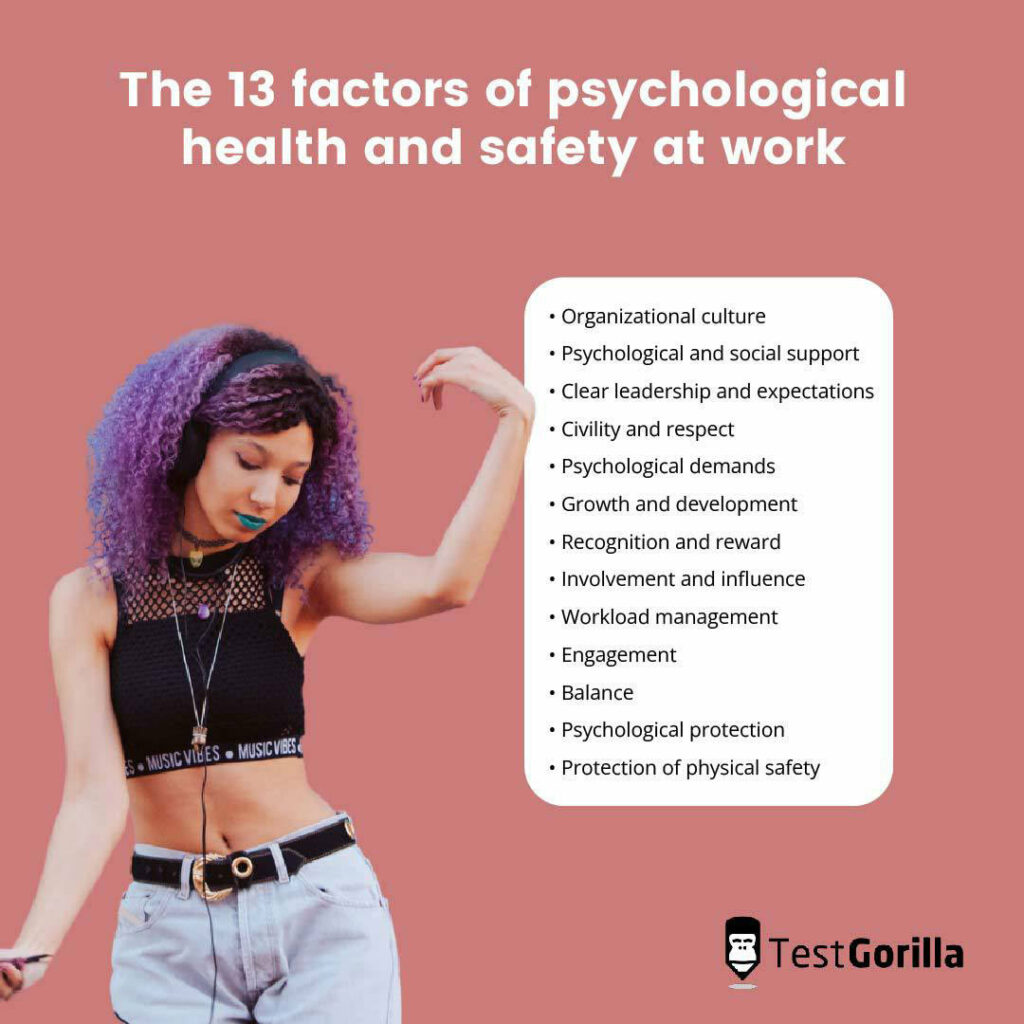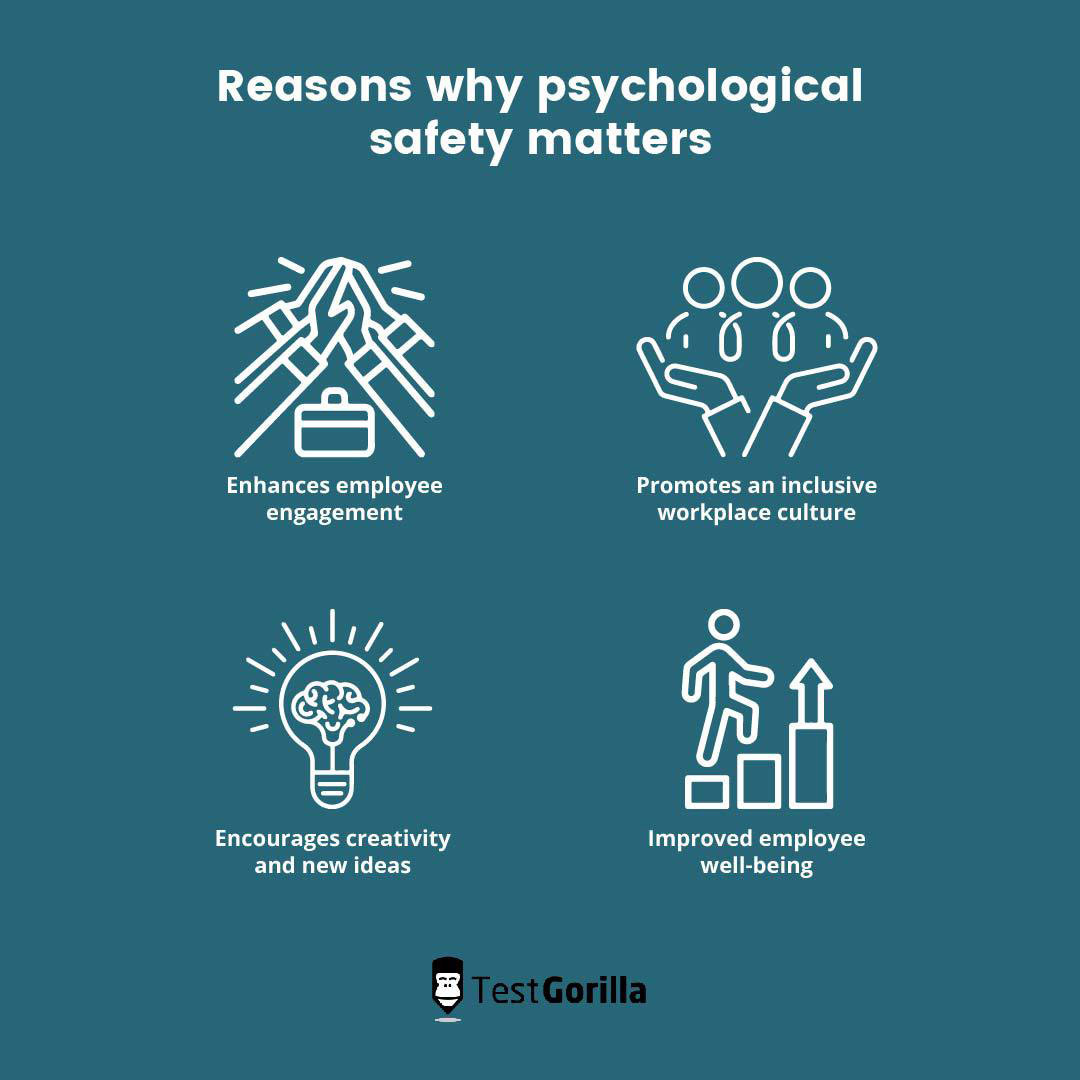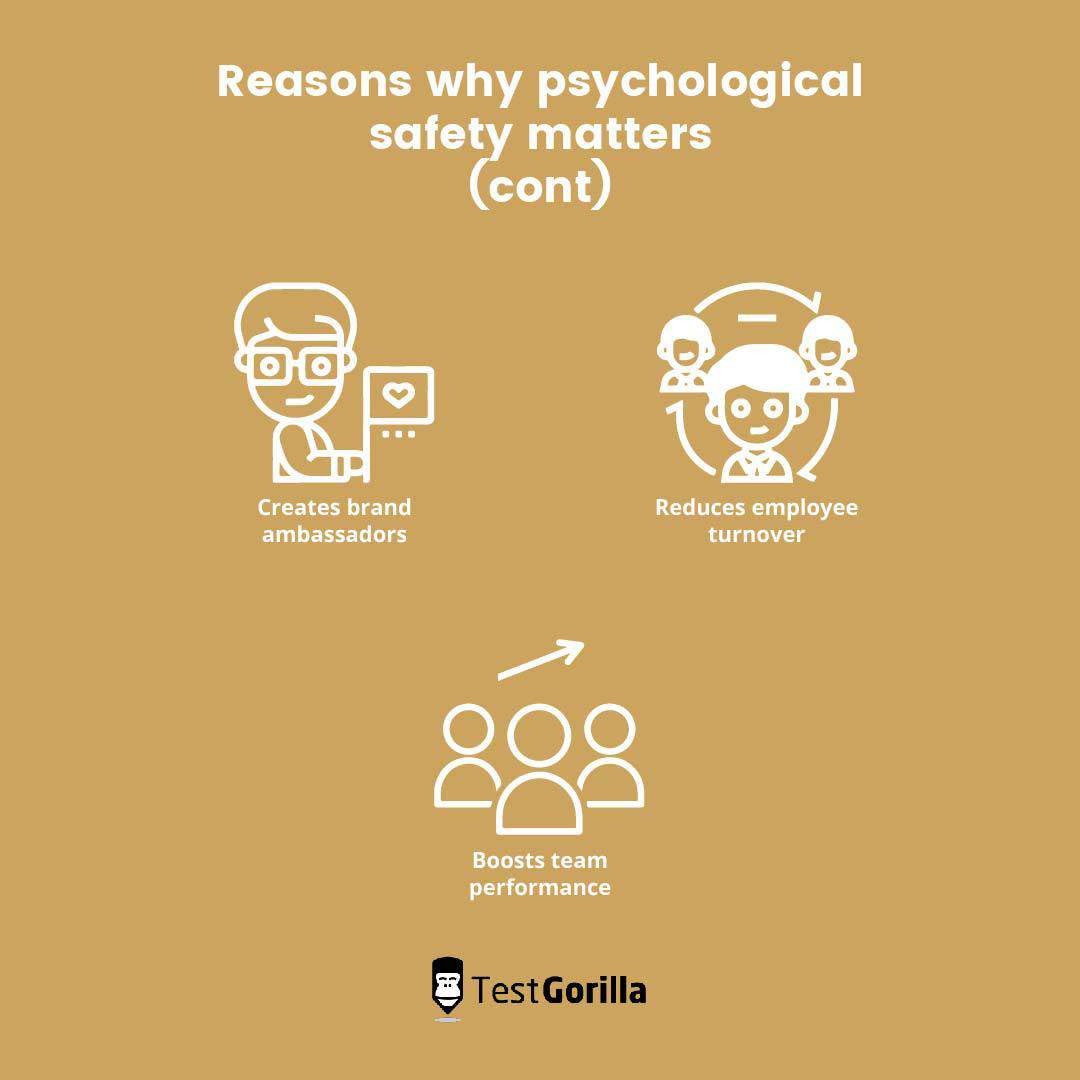Psychological safety at work is something that seems to be talked about a great deal, so you could be forgiven for thinking that psychologically safe workplaces are the norm. The reality is that they are few and far between.
So what is psychological safety in the workplace about?
It’s about feeling free to speak your mind involving concerns, ask questions, share opinions, propose ideas, or admit mistakes without fear of ridicule or negative consequences.
Sounds good, right? So why are so many organizations not creating a culture of psychological safety at work?
Only one in five employees say they feel comfortable sharing constructive criticism at work, which means the remaining four out of five don’t feel able to speak up without fearing repercussions.
You can help by establishing a culture that promotes psychological safety at work, where your staff can speak up without fear of being ridiculed or facing professional sanctions.
This may seem like a daunting task, but we’re going to show you the various ways you can create psychological safety at work to help your employees thrive.
Table of contents
How to create psychological safety at work
There’s no one-size-fits-all approach to creating a psychologically safe workplace, and your methods may need tailoring according to how big your organization is or what the cultural norms are in your country.
We’ve gathered a few good ideas here to help you increase psychological safety for your employees:
1. Observe how teams may discourage others from speaking
It can be useful to monitor how your teams may inadvertently (or deliberately) create a climate that discourages individuals from participating in a discussion.
Give your reassurance that team members won’t be punished or laughed at for sharing their ideas or concerns. Tell them that honest feedback is to be encouraged, and thank everyone for their contribution. Even if their ideas aren’t adopted, make sure they know that they should continue to provide them.
2. Lead With Empathy
When you lead with empathy, others will follow. Direct, respectful feedback and self-awareness are important for helping your staff to feel comfortable and confident about communicating.
Although there are some famous business leaders who use fear as a leadership tactic (Jeff Bezos claims that fear can be motivating), most employees will become stressed and resentful when you constantly lead with the stick and not the carrot.
Curb any manipulative or passive-aggressive behavior, and if you want your teams to give their all, lead from the front instead of driving them on from the back.
3. Transparency builds trust
One of the most effective methods to build psychological safety at work is to be transparent.
When you are clear about performance feedback, budgets, layoffs, and promotions, people know where they stand and don’t have to worry about unanswered questions. This builds trust in the leadership, which in turn nurtures psychological safety in the workplace.
4. Promote communication skills and active listening
Communication is the foundation that underpins psychological safety, and there are four types of it: written, verbal, visual, and non-verbal.
Sometimes, we don’t realize that how we say something matters as much as what we are saying. The tone of your voice and body language can impact psychological safety, so it’s useful to be aware of how you are coming across to others.
Our Communication test evaluates the four types (including active listening), and it can be useful for you and your employees to discover how you score and use this awareness to improve communication skills across the organization.
5. Show respect for different opinions
It’s fine to disagree with what someone is saying, especially if there is evidence to back it up. However, there are ways to respectfully disagree that help maintain psychological safety at work.
It’s never OK for someone to react with sarcasm, ridicule, or hostility when an employee airs an opinion that is different to theirs. Everyone should feel free to express their thoughts and be listened to with respect.
6. Don’t play the blame game
When something goes wrong our first instinct is to look for someone to blame. However, to build trust and psychological safety at work it’s important to look for solutions instead.
Use collaborative language like “we”, and instead of saying “this is your fault, why did you do this?” ask “how can we make sure things go better next time?” or “what can we learn from this?”
By using “we”, the responsibility becomes that of the group, instead of the individual.
7. Don’t tolerate negativity
Unfortunately, it can be a common problem to have an employee who talks negatively about others on their team. You must deal with this, because negativity spreads fast. Talk to them about their attitude, and make it clear that you all work as a team and that trash talk about others won’t be tolerated.
If you don’t take steps to nip this behavior in the bud, employees will think that it’s fine to talk badly about others, or that others are talking about them behind their back. Nothing kills psychological safety at work like negative gossip.
Research has shown that most toxic coworker behavior boils down to just one or two people in a workplace, but that’s all it takes to make other employees unhappy and undermine team cohesiveness.
8. Be present and fully engaged with others
It’s soul-crushing when you’re speaking and you know someone isn’t paying attention to what you’re saying. If you or others are distracted by emails, messages, or Slack during a meeting, it shows your employees that you don’t value their thoughts and opinions enough to stop what you’re doing and listen to them.
So, shut that laptop and put your phone on silent to show you’re fully present and listening. It might not seem like much, but small acts of engagement like this can have a positive impact on your team’s psychological safety at work.
9. Provide multiple ways for employees to share their thoughts
In your organization, you’ll likely have a mixture of people with different personality traits, such as extraverts and introverts. Extraversion is seen as the ideal in western culture, and most workplaces are set up to cater to their preferences, such as sharing their thoughts verbally in a group setting.
Many introverts, however, aren’t comfortable voicing their opinions in such a public way, and some people don’t do well with spontaneous answers because they prefer to have time to think about their responses.
In order to promote psychological safety at work for all, you should encourage employees to share feedback through the medium they feel most comfortable with, such as email, messaging, or in-person discussions.
Personality testing can give you deeper insight into how your staff prefer to communicate, as well as other personality traits, such as conscientiousness and motivation.
10. Own up to your mistakes
No-one enjoys failure, but as a leader you can make it hurt less for your employees by owning up to mistakes you have made in your career, and how it helped you learn.
Ask your staff to share what things they have done that didn’t go their way, and what they have learned from the experience. Doing this will help your employees feel more confident about taking risks and speaking up, especially if you have shared your own mistakes with them.
Take the next steps to building psychological safety at work
As a leader, the culture you create can build or break your employees’ psychological safety. Use these 10 ideas as inspiration to set the scene for psychological safety at work and empower your staff.
When your workers realize it’s safe, they will share their ideas, concerns, and feedback, which will enhance their team’s performance and unity.
If you want to explore further how personality testing can give you valuable insight on your current employees (as well as potential ones), sign up for our free plan and explore our range of tests. You can even take some yourself and learn about your own personality traits before you test your employees.
Or, if you have some questions and want to see how our platform works, book a free 30-minute live demo with a member of our sales team.
Related posts
Hire the best candidates with TestGorilla
Create pre-employment assessments in minutes to screen candidates, save time, and hire the best talent.
Latest posts
The best advice in pre-employment testing, in your inbox.
No spam. Unsubscribe at any time.

Hire the best. No bias. No stress.
Our screening tests identify the best candidates and make your hiring decisions faster, easier, and bias-free.
Free resources
This checklist covers key features you should look for when choosing a skills testing platform
This resource will help you develop an onboarding checklist for new hires.
How to assess your candidates' attention to detail.
Learn how to get human resources certified through HRCI or SHRM.
Learn how you can improve the level of talent at your company.
Learn how CapitalT reduced hiring bias with online skills assessments.
Learn how to make the resume process more efficient and more effective.
Improve your hiring strategy with these 7 critical recruitment metrics.
Learn how Sukhi decreased time spent reviewing resumes by 83%!
Hire more efficiently with these hacks that 99% of recruiters aren't using.
Make a business case for diversity and inclusion initiatives with this data.























